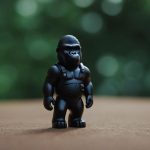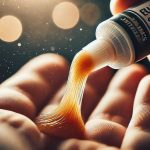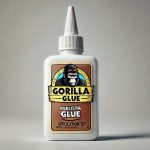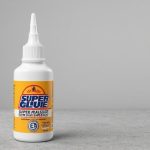Gorilla Glue is renowned for its remarkable strength and versatility, making it a favorite for DIY enthusiasts and professionals alike. However, its tenacity can become a double-edged sword when it adheres to unintended surfaces like your skin, clothes, or household items. So, what dissolves Gorilla Glue effectively? The answer lies in a combination of readily available solvents and some careful techniques.
Acetone, commonly found in nail polish remover, is one of the most effective agents for dissolving Gorilla Glue, especially on metal and hard surfaces. For softer materials like fabric, warm, soapy water or lemon oil can work wonders, breaking down the glue’s bond without damaging the material. On wood, a little more finesse is required—removing the glue before it dries completely and using a razor blade or sandpaper for dried residue is your best bet.
Key Takeaways:
- Acetone: Ideal for dissolving Gorilla Glue on metal and hard surfaces.
- Lemon Oil: A natural solution for minor glue stains on various surfaces.
- Warm, Soapy Water: Effective for soft materials like fabric.
- Razor Blade or Sandpaper: Best for removing dried glue from wood surfaces.
- Avoid Acetone on Wood: It can damage the surface, so opt for mechanical removal methods instead.
Understanding these techniques can save you a lot of frustration and potential damage to your belongings. Let’s delve into each method in detail, ensuring you’re well-equipped to handle any Gorilla Glue mishap.
Table of Contents
What is Gorilla Glue?
Gorilla Glue is a versatile, polyurethane-based adhesive renowned for its formidable bonding strength and wide-ranging applicability. Introduced by The Gorilla Glue Company in 1999, this adhesive has become a household staple for both minor repairs and substantial DIY projects.
| Feature | Gorilla Glue | Other Glues |
| Bonding Mechanism | Reacts with moisture, expands as it cures | Typically relies on evaporation to dry |
| Strength | Up to 2,000 psi | Varies, generally lower than Gorilla Glue |
| Water Resistance | Waterproof | Many are not waterproof |
| Temperature Resistance | Can withstand extreme temperatures | Varies, many are less resistant |
| Material Compatibility | Wood, metal, stone, ceramic, foam, glass, etc. | Often material-specific |
Why Is It Difficult to Dissolve Gorilla Glue?

Gorilla Glue is challenging to dissolve due to its unique chemical composition and curing process. It contains polyurethane, which reacts with moisture in the air and on surfaces to form a robust thermosetting polymer.
This chemical reaction creates a tight bond that is resistant to impact, heat, and solvents, making the adhesive exceptionally durable and hard to break down.
| Feature | Description |
| Key Ingredient | Polyurethane |
| Curing Process | Moisture-activated, forming a thermosetting polymer |
| Resistance | Impact, heat, and solvent-resistant |
| Bonding Capability | Effective on dissimilar materials (e.g., metal to wood, stone to glass) |
| Applications | Woodworking, outdoor furniture, shoe repair |
Why Does Gorilla Glue Have Such Strong Adhesive Properties?
Gorilla Glue’s remarkable adhesive properties are due to its polyurethane base, which creates an incredibly strong bond when exposed to moisture. This process leads to the formation of a durable and resistant thermosetting polymer.
- Moisture Reaction: Polyurethane in Gorilla Glue reacts with moisture to expand and form a strong, interlocking bond with the surfaces it contacts. This reaction ensures that the glue penetrates porous materials deeply, creating a secure hold.
- High Tensile Strength: The cured adhesive boasts high tensile strength, meaning it can withstand significant stress and strain without breaking. This quality is crucial for applications requiring a durable bond, such as woodworking and metal repairs.
- Versatility: Gorilla Glue can bond various materials, including wood, metal, stone, ceramic, and glass. This versatility makes it a favourite for both DIY projects and professional repairs.
- Resistance to Elements: Once cured, the glue is resistant to water, extreme temperatures, and most solvents. This resistance ensures that the bond remains strong and intact even in harsh conditions.
Technical Specifications and Practical Applications
Gorilla Glue’s technical specifications highlight its impressive capabilities:
- High tensile strength: Provides a robust and durable bond.
- Resistance to extreme temperatures: Suitable for indoor and outdoor projects.
- Water-resistant properties: Ideal for applications exposed to moisture.
Its practical applications are diverse, including:
- Woodworking projects: Ensuring a strong and lasting bond for furniture and crafts.
- Outdoor furniture repair: Withstanding the elements without deteriorating.
- Shoe repair: Providing a durable fix for footwear exposed to wear and tear.
Acetone: A Powerful Solvent for Dissolving Gorilla Glue
Acetone effectively dissolves Gorilla Glue by breaking down the chemical bonds within the adhesive’s structure. Gorilla Glue, a polyurethane-based adhesive, cures and hardens through a reaction with moisture, creating a strong and resilient bond. Acetone, a potent organic solvent, disrupts these bonds by penetrating and softening the cured adhesive.
When acetone comes into contact with Gorilla Glue, it interacts with the polymer chains, causing them to swell and break apart. This process renders the glue soft and pliable, making it easier to scrape or wipe away. For optimal results, soak a rag in acetone and place it on the glued area for several minutes, allowing the solvent to thoroughly penetrate the adhesive.
Below is a table summarizing the key points of how acetone dissolves Gorilla Glue:
| Aspect | Description | Additional Information |
| Chemical Composition | Gorilla Glue is polyurethane-based and cures with moisture. | Forms a strong, thermosetting polymer. |
| Action of Acetone | Acetone disrupts the polymer bonds in the glue. | Penetrates and softens the cured adhesive. |
| Application Method | Soak a rag in acetone and apply to the glued area. | Allow to sit for several minutes to ensure penetration. |
| Effectiveness | Acetone effectively breaks down the glue, making removal easier. | Useful for cleaning and repairing surfaces affected by Gorilla Glue. |
Rubbing Alcohol or Isopropyl Alcohol: An Alternative to Acetone
The short answer is no, rubbing alcohol or isopropyl alcohol cannot effectively dissolve Gorilla Glue as an alternative to acetone. Gorilla Glue is a polyurethane adhesive, which makes it resistant to many solvents, including isopropyl alcohol. While rubbing alcohol may soften the glue slightly, it will not break down its chemical structure sufficiently to facilitate complete removal. In fact, attempting to use rubbing alcohol might make the glue even stickier, complicating the cleaning process.
Here’s a breakdown of the effectiveness of different solvents on Gorilla Glue:
| Solvent | Effectiveness | Notes |
| Acetone | Highly effective | Breaks down chemical bonds in Gorilla Glue, making removal easier |
| Rubbing Alcohol (Isopropyl Alcohol) | Not effective | May soften glue but won’t dissolve it; can make glue stickier |
| Water | Ineffective | Gorilla Glue is water-resistant once cured |
| Mineral Spirits | Partially effective | Can soften but not fully dissolve the glue |
For effective removal of Gorilla Glue, it’s best to use acetone, which can be found in many nail polish removers. Always use acetone in a well-ventilated area and follow safety instructions to avoid any hazards. If acetone is not an option, you might need to consider mechanical methods like scraping or sanding, though these can be more labour-intensive and potentially damaging to the surfaces involved.
Natural Alternatives: Vinegar and Lemon Juice
The short answer is yes, vinegar and lemon juice can help dissolve Gorilla Glue, but they work more slowly compared to stronger solvents like acetone. Here’s how these natural alternatives work:
Vinegar and Lemon Juice
| Substance | How It Works | Usage Tips |
| Vinegar | Vinegar contains acetic acid, which can break down the adhesive properties of Gorilla Glue. The acid slowly softens the glue, making it easier to scrub off. | Soak a cloth in white vinegar and place it on the glue for 15-30 minutes. Then, gently scrub the area with a sponge or cloth. |
| Lemon Juice | Lemon juice is acidic and can similarly break down the glue’s adhesive bonds. Its acidity helps to weaken the glue’s grip on surfaces. | Apply fresh lemon juice directly to the glue. Let it sit for 10-15 minutes before attempting to scrub it off. |
Other Natural Alternatives
| Substance | How It Works | Usage Tips |
| Olive Oil | Olive oil works by penetrating the glue and loosening its hold, making it easier to remove. | Rub a generous amount of olive oil onto the glue and let it sit for 10-20 minutes. Gently scrape or peel off the softened glue. |
| Coconut Oil | Coconut oil has a similar effect to olive oil, breaking down the adhesive properties of the glue. | Apply coconut oil to the affected area and let it soak. Scrub gently with a cloth after the glue has softened. |
| Warm Soapy Water | Soaking the area in warm soapy water can help to soften the glue, making it easier to scrub off. | Soak the glued area in warm, soapy water for 15-30 minutes. Use a sponge or cloth to gently scrub off the softened glue. |
| Petroleum Jelly | Petroleum jelly can help to loosen the glue by softening it, making it easier to remove. | Apply a thick layer of petroleum jelly to the glue and let it sit for a few hours. Wipe off the jelly and the softened glue with a cloth. |
Key Points:
- Patience and Repeated Applications: These natural methods may require repeated applications and some patience, as they generally work more slowly than acetone.
- Gentle Scrubbing: Always use gentle scrubbing to avoid damaging the skin or surfaces.
- Prevention: To avoid glue mishaps, wear gloves and work carefully when using Gorilla Glue.
Tips for Safely Removing Gorilla Glue
Removing Gorilla Glue can be tricky, but these methods will help you tackle it without damaging surfaces:
Using Acetone
- Apply 100% acetone to the affected area. Acetone is effective in loosening the glue.
- Gently rub the area with a water-dampened rag to remove the glue.
Fingernail Polish Remover
- For metal surfaces, use a fingernail polish remover containing acetone.
- Scrub the softened glue with a cloth or brush.
Goo Gone and Soapy Water
- Apply Goo Gone to the glue and let it sit for a few minutes.
- Wash the area with soapy water to remove any remaining residue.
Scraping with a Blade
- Use a sharp blade or scraper to carefully remove as much glue as possible.
- Be cautious to avoid scratching the surface.
Heating
- Heat the glue with a hairdryer to soften it.
- Wipe away the softened glue with a cloth.
Chiseling for Hard Surfaces
- On hard surfaces, use a chisel or knife to carefully remove cured glue.
- Clean any residue with an abrasive sponge and spray lubricant.
Lemon Oil
- For minor glue stains, lemon oil can be a natural solution.
- Dab a small amount on the glue and rub gently.
Wood Surfaces
- Remove the glue before it dries completely.
- Use a razor blade or sandpaper to get rid of any dried residue.
- Avoid using acetone or paint thinner on dried Gorilla Glue on wood.
Conclusion
When dealing with the tenacity of Gorilla Glue on unintended surfaces, knowing the right solvents and techniques is essential. Gorilla Glue, renowned for its strength and versatility, poses a challenge when it adheres to skin, clothing, or household items. Here are some effective methods to dissolve it:
Acetone is a powerful solvent, especially effective on metal and hard surfaces. Found in nail polish remover, acetone breaks down the chemical bonds of the glue, making it easier to remove.
For softer materials like fabric, warm, soapy water or lemon oil can effectively break down the adhesive without causing damage. These gentle methods are ideal for delicate surfaces.
On wood, mechanical methods such as a razor blade or sandpaper are preferable. Using acetone on wood can damage the surface, so scraping or sanding off dried glue is the safest approach.
Each method leverages a specific solvent’s ability to interact with Gorilla Glue’s polyurethane base, disrupting its bonds and making removal possible.






